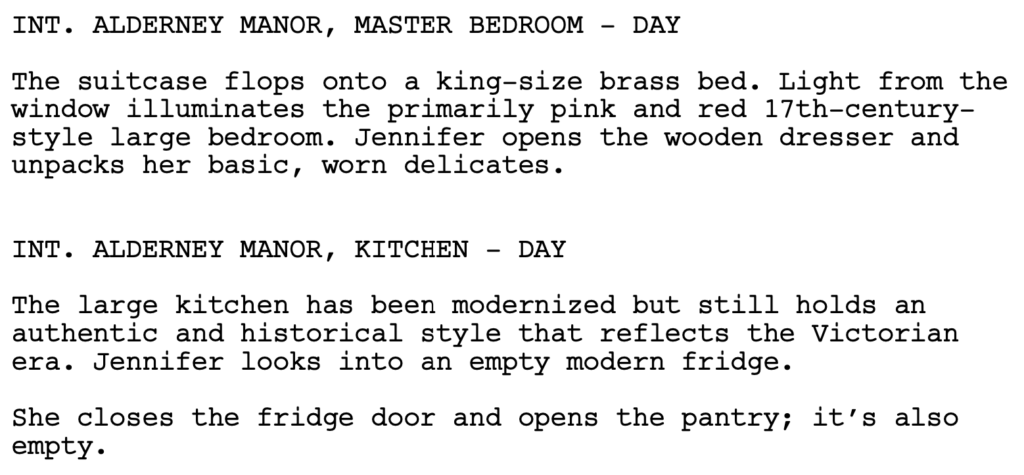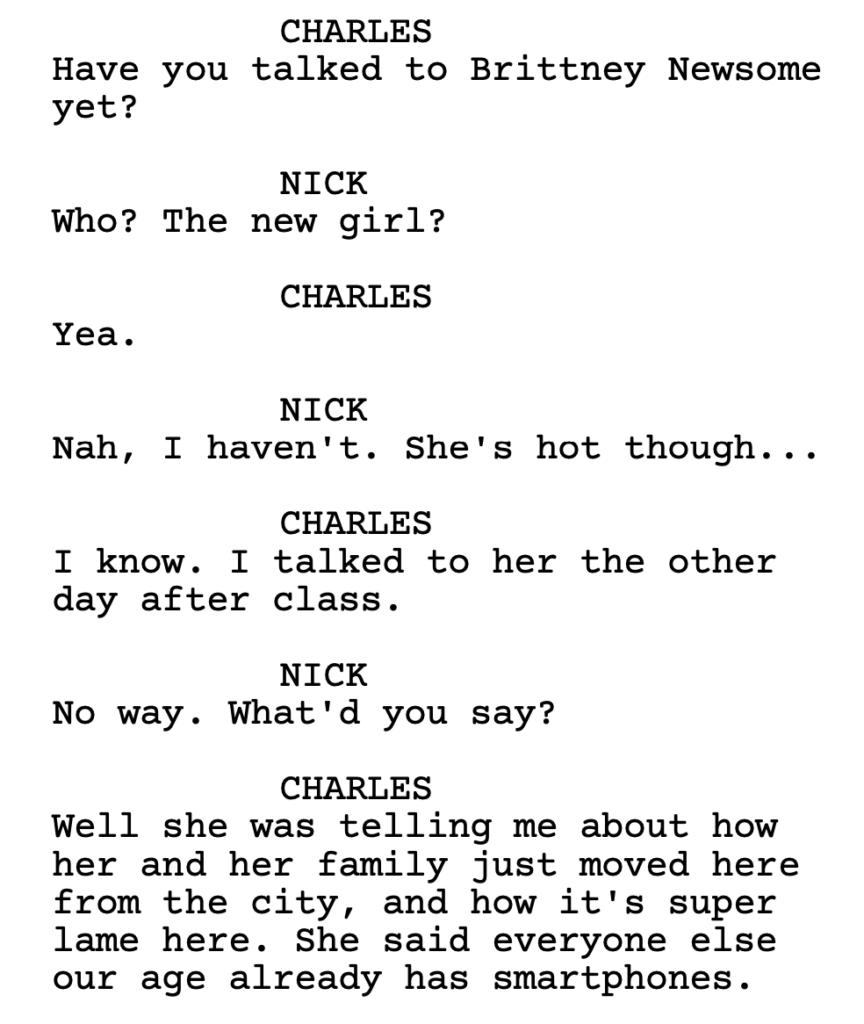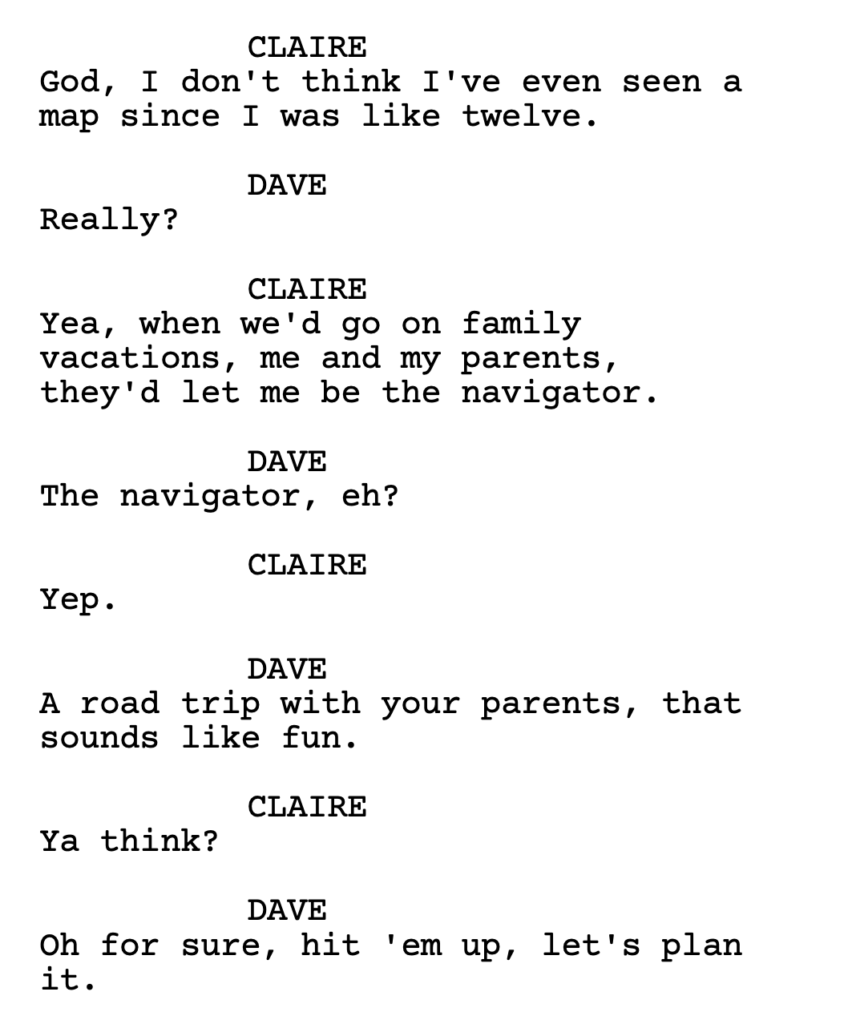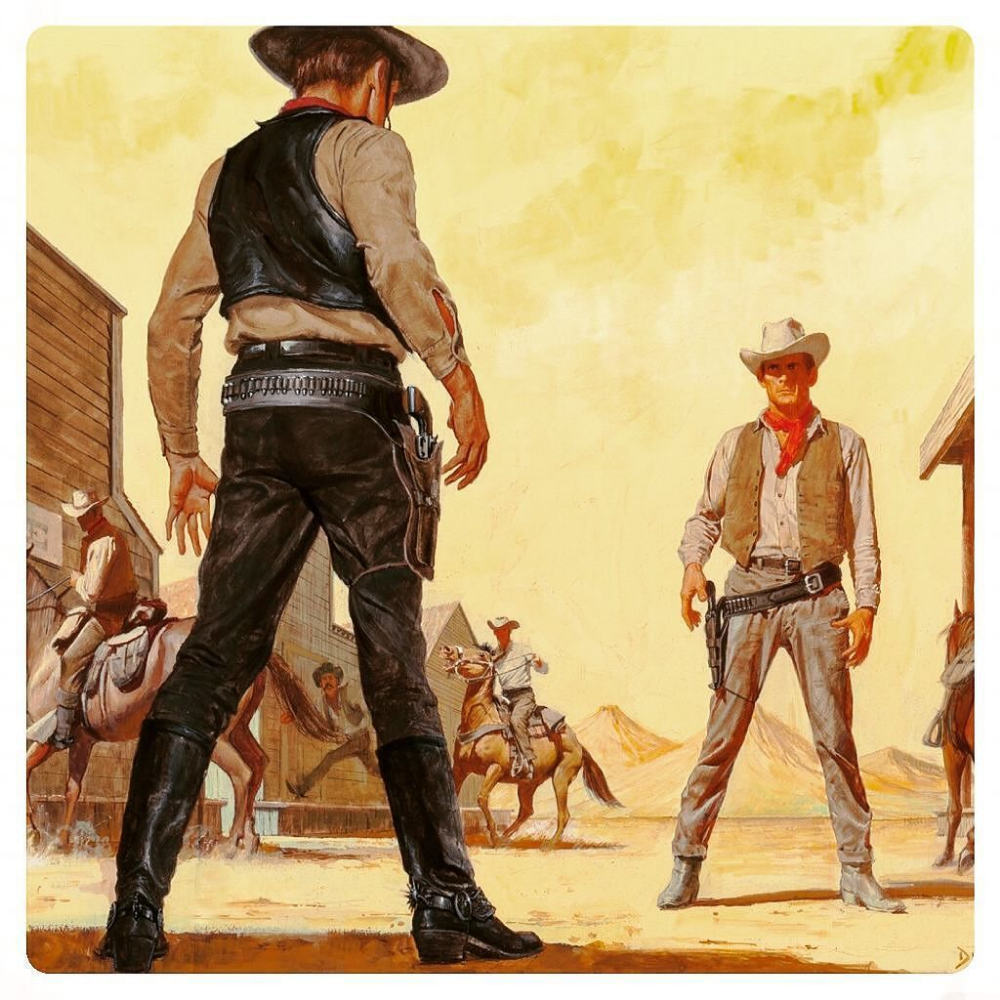
Does anyone here know what a “screenplay movie” is?
A “screenplay movie” is a movie that actually resonates because of the screenplay.
Most of the movies at the top of the box office in the IP era are *not* screenplay movies. They’re Hollywood movies.
They’re designed to sell tickets and merchandise. Their impact is based more on the filmmaking – the big set pieces, the flashy production value, the huge star power – than anything that’s written on the page.
It’s not that writing these movies is easy. Far from it. Hollywood movies have their own set of challenges brought on by managing multiple points-of-view (the studio, the director, the actors, 20 different producers), many of which conflict.
Imagine receiving a note from the lead actor to make their character funnier then an hour later receiving a note from the head producer to make the lead character more serious. That kind of conflicting feedback is not uncommon.
But the bulk of Hollywood movies are about laying out a clear three-act structure and managing exposition so that the audience can clearly follow what’s going on. You are solving issues that are more technical than artistic, which is why these movies are less rewarding to work on and less rewarding to watch.
“Screenplay movies” put more thought into the characters, take more risks inside the plot, have more to say through their themes, and generally make you think and feel a lot more. They are designed to connect with you rather than whack you across the head.
Here is a list of the top 10 movies at the global box office in 2023:
1) Super Mario Bros — $1.36B
2) Barbie — $1.34B
3) GotGVol3 — $845M
4) Oppenheimer — $777M
5) Fast X — $705M
6) Across The SpiderVerse — $688M
7) The Little Mermaid — $568M
8) Mission Impossible7 — $552M
9) Ant-Man3 — $476M
10) Elemental — $468.6M
Surprisingly, five of them are screenplay movies and five of them are Hollywood movies. I say “surprisingly” because, usually, the top 10 is dominated by Hollywood movies. Do you know which ones are the screenplay movies? I’ll give you a second to make your picks.
The Hollywood movies on the list are…
Super Mario Brothers
Fast X
The Little Mermaid
Mission Impossible 7
Ant-Man 3
The screenplay movies are…
Barbie
Guardians of the Galaxy 3
Oppenheimer
Across The Spider-verse
Elemental
I know a lot of people loved Super Mario Brothers but let’s be real. It’s positioned as a product above all else. I wouldn’t be surprised if AI is writing all the Fast & Furious scripts at this point, the writing has become so insignificant. Did anybody even write The Little Mermaid? Aren’t they just using the same script as last time? Mission Impossible 7 isn’t as bad as Fast X in the writing department. But that franchise clearly prioritizes stunts over everything else. And then Ant-Man 3 is part of the Marvel machine. They probably have a studio exec leaning over a poor screenwriter’s shoulder saying, ‘yes,’ ‘no,’ ‘yes,’ ‘no,’ ‘rewrite that part,’ after every sentence.
With the screenplay movies, we’ve got Elemental, which I’m guessing is a screenplay movie because Disney puts a lot of thought into their screenplays for their original films, a valuable lesson they learned from Pixar. I haven’t seen Spider-verse but everybody tells me it’s got a great screenplay. I almost put Oppenheimer on the Hollywood list because Nolan prioritizes directing over writing. He’s more about his vision than getting the screenplay right. But he cares so much about these characters, and characters are the most important screenplay ingredient of all, that I decided to give him the benefit of the doubt. James Gunn has always been a screenplay-first guy. And you can tell he wants to move people with Guardians of the Galaxy. He doesn’t just want spectacle.
And then you have Barbie.
Barbie is an anomaly. It is a screenplay movie in a Hollywood movie body. Which is why, even though I didn’t agree with its message, I commend the writers for what they accomplished. Cause what they accomplished is amazing. They made a billion-dollar movie that actually makes you think, that actually gets people talking.
I told you, when I went on my recent family reunion, everybody in my family had an opinion about Barbie. That’s so rare these days. But it’s because the movie is a “screenplay first” concept that it’s resonating. It’s trying to say something rather than trying to draw audiences in. It just happened to be a product that everyone wanted to see. Which is how they used to make movies. They’d make gambles like this.
And for those of you who are saying, “Carson… blah blah blah… it’s Barbie. It’s international IP. Everyone was going to see this no matter what.” I don’t agree with that. I think if they went with the Hollywood version of this, it would’ve looked flat. It would’ve looked uninteresting. It would’ve still made money. But it would not have come anywhere close to 1.3 billion.
“Barbie” should be encouraging to every screenwriter out there. It shows you that when a good writer has a strong vision, they’re better at this than all the studio heads combined. The artist is the only one in the equation who wants to take risks. The studio and the producers hate risks. Which is why the movies they spearhead feel so average. They never hit you on an emotional level.
Here is this latest weekend’s Top 10 along with their categorization…
1) Gran Turismo – 17.3 mil/17.3 mil – Hollywood
2) Barbie – 17.1 mil/594 mil – Screenplay
3) Blue Beetle – 13 mil/46 mil – Hollywood
4) Oppenheimer – 9 mil/300 mil – Screenplay
5) Teenage Mutant Ninja Turtles: Mutant Mayhem – 6 mil/98 mil – Hollywood
6) Meg 2: The Trench – 5 mil/74 mil – Hollywood
7) Strays – 4 mil/16 mil – Hollywood
8) Retribution – 3.3 mil/3.3 mil – Hollywood
9) The Hill – 2.5 mil/2.5 mil – Screenplay
10) Haunted Mansion – 2 mil/62 mil – Hollywood
I was rooting for Gran Turismo and happy for its first-place finish. Even though it’s a subdued winner, it should get director Neil Blomkamp another directing project. Whether that’s a good or a bad thing, we’ll find out. But a part of me still roots for him, at least until we get District 10. The movie just couldn’t overcome its benchwarmers status. The cast (Orlando Bloom?) makes you think that someone at Netflix made a mistake and accidentally put the movie in theaters instead of on the service.
Poor Blue Beetle. These DC movies can’t overcome their association with the former era of DC. Who wants to see a superhero movie that they know has no future? But even if that wasn’t the case, the CGI on this Blue Beetle guy screamed “cheese factor 700 thousand.” It just didn’t work. It was an ill-conceived superhero project from the outset.
The movie I was most intrigued by on this list was Strays. Not because I wanted to see it. But because it’s a physical manifestation of how confused Hollywood is right now. It used to be that if you pitched a movie like this in a room, the response would be: “A movie with real dogs that’s raunchy and R-rated? So you can’t bring kids, cause it’s too raunchy. And you can’t bring in adults because adults don’t want to see a movie about dogs on an adventure. Who’s going to show up to this movie???” The pitch would die before the writers could ask if the studio preferred two brads or three on their drafts.
But, these days, nobody knows what’s going to do well or not so they throw stuff at the wall. On some level, I admire it. It’s a bold move. But, in the end, it turned out the old school thought process was correct. This concept actively discourages both ends of the audience spectrum from seeing the film.
I’m just glad that, after looking the box office up and down this week that screenwriting still matters! I don’t know why I thought it didn’t matter at the top of the box office. I guess I assumed that the top 10 movies were always going to be machines that placed screenwriting at the bottom of the priority list. But it’s clear from Barbie’s success (as well as some of these other giant films) that if you want to really connect with audiences, giving screenwriters a concept and “getting the f**k out of the way,” a la Michael Jordan circa 1989 in Cleveland, is the best way to go. :)
Every second-to-last Friday of the month, I post the five best loglines submitted to me. You, the readers of the site, vote for your favorite in the comments section. I then review the script of the logline that received the most votes the following Friday.
If you didn’t enter this month’s showdown, don’t worry! We do this every month. The deadline for September Logline Showdown is Thursday, September 21, 10pm Pacific Time. All I need is your title, genre, and logline. Send all submissions to carsonreeves3@gmail.com.
If you need help with your logline, I’m here. I’d say that about 20% of the entries I receive have good enough concepts to make the Showdown but are plagued by loglines that are either too messy, too unfocused, too long, or straight-up have the wrong approach. If you want a logline consult, they’re cheap – just $25. E-mail me at carsonreeves1@gmail.com if you’re interested.
SIX loglines this month.
Good luck to all the contestants!
Title: Milk & Whisky
Genre: Western
Logline: Following the unusual death of his best drinking buddy, a lonesome drifter pursues refuge from old temptations and growing accusations by attending the frontier’s first rehab for alcoholics.
Title: Wayward Son
Genre: Thriller
Logline: When her estranged son returns and takes her grandson in the night, a veteran park ranger sets out to rescue him from the clutches of a mysterious cult deep in the Oregon woods.
Title: HAUL
Genre: Western
Logline: A female bounty hunter must transport two valuable corpses across an unforgiving, lawless wilderness with the help of a mysterious drifter.
Title: Matadors
Genre: Coming-of-Age / Horror
Logline: After ditching their field trip in a wildlife refuge, a group of overachieving prep school kids come under attack by a rogue, performance-enhanced fighting bull.
Title: The Patriotic Hitman
Genre: Action Thriller
Logline: A rogue government sniper assigned to kill a presidential candidate at a rally becomes a national hero when he spots a suicide bomber in the crowd and shoots him instead.
Title: trAiLIENS
Genre: Comedy/Sci-Fi
Logline: When a pencil-pushing FBI agent’s life is flipped ass-backwards by a UFO abduction, he launches a one-man probe to expose a mysterious Florida trailer park as ground zero for an imminent alien invasion.
GET THOSE LOGLINE SHOWDOWN ENTRIES IN! DETAILS BELOW!

The August Logline Showdown deadline is TONIGHT at 10pm. For Logline Showdowns, you send me a logline for a script. I then pick the best five loglines and they compete on the site with you guys voting. Whoever wins gets a script review the following week!
What: August Logline Showdown
Enter: Feature Screenplay Loglines Only
Deadline: Thursday, August 24th, 10:00 PM Pacific Time
Where: carsonreeves3@gmail.com
Okay, on to today’s topic!
Lately, I’ve been reading too many screenplays where I haven’t been able to connect with the characters. Whenever this happens, I go to this place where I think I can’t enjoy screenplays or movies anymore because I’m too deep inside the screenwriting matrix. I only see writers making choices rather than getting lost in a well-told story.
But then I’ll watch or read something good and realize that, no, it’s not that I’m emotionally dead inside. It’s that the writing isn’t good enough. The specific place where most writing goes bad is in the characters. The vast majority of the characters I read in screenplays are some combination of uninspired, boring, simplistic, and weak.
But the worst characters I see? Are the ones who are just *there*. That’s it. They’re on the page. They’re in the script. But they lack any sort of quality that pulls you in and makes you care about them. There are only 2 scripts on last year’s Black List where the writers wrote characters that I actually cared about. They were…
There were other scripts on the list that made me interested in the characters. But here’s why I’m writing today’s article. Making readers interested in your characters isn’t the same as making people *care* about your characters. It’s the difference between characters charged with TNT and characters charged with plutonium.
When you make the reader care about a character, they are EMOTIONALLY ENGAGED in your screenplay, which makes the story a thousand times more potent.
And writers just don’t know how to do this anymore. I don’t fault them for this. The biggest thing I’ve learned about screenwriting since I created Scriptshadow is that the hardest part to get right is the characters. That’s because you’re trying to represent a 659-dimensional human being in two dimensions. Our lives are hundreds of thousands of hours long. You think it’s easy to emulate that within two hours? It takes all sorts of writing knowledge to figure out how to condense the vast complexity of someone’s life into an artificial person who only exists for two hours.
But here’s the good news. I’m going to tell you how to do it. Right here. Right now. There are seven key things you gotta focus on. You will not be able to include all seven every time you construct a character. That’s because each script is different. But you should try and include as many as you can. Are you ready? Here we go.
A PAST
Give your character a past. Make that past as specific as possible. Because the more you know about that character’s past, the more you can include it in who that character is right now. If your character used to sell drugs on the street before becoming a big successful businessman, maybe he still has some of that “street” in him. Maybe he uses more slang. Maybe he’s not so prim and proper. If you know 19 other things about that character’s past and all 19 of those things have some echoes and remnants that have made it into who your character is today? I guarantee they’re going to be a more fleshed-out character than 90% of the characters the average script reader reads.
A SPECIFIC JOB
I just read this script where it wasn’t clear what the main character’s job was. I don’t think the writer knew. You can’t make this mistake. A character’s job is one of the easiest ways to add some specificity to them – to make them stand out from other characters. We spend half our lives at our jobs. So our jobs have a big influence on who we are, what we talk about, what we’re interested in, how much time we have for others. There’s a reality show I watch where this person used to be a bartender 12 years ago. And when he was a bartender, all he cared about was getting drunk and scoring chicks. In the latest season of the show, he’s become a bar owner. Now, all he cares about is where to score more investment money and ways to get more people to show up at his bars. Same person, but his job has created two completely different versions of him. For a writer to not be absolutely clear on what his main character’s job is and what that job entails and how it shapes his character is criminal. You’ve got to know!
DETAIL
I’m not exaggerating when I say that 99% of the scripts I read don’t include enough detail about the characters (specifically the main characters). Give me the details! Don’t tell me he’s wearing a “nice outfit.” Tell me what the outfit looks like. Is he wearing a blazer? If so, what color is it? That’s going to tell me something about him (if it’s lime green, I’m going to know that he’s eccentric). Is it a cheap blazer or an expensive one? Cause that’s going to tell me if he has money. Is it tailored or is it ill-fitting? That’s going to tell me if he cares about his appearance. And I’m just talking about his outfit here. Detail extends far beyond that. I want to know the details of his place. I want to know if he walks slow or fast. I want to know if he speaks with a lisp. Every detail you give is an opportunity for us to understand your character better.
ACTIVE
Make your character active. This is the one that most writers get right because it’s often a function of the screenplay. Most screenplays have a goal that needs to be achieved (Take down Thanos!). So your characters have no choice but to be active when they pursue this goal. Active characters are way more interesting than passive characters. Of course, there are rare stories that require a passive protagonist. That’s fine. But I promise you that for the 99.9999% of stories out there, you want your character to be active. It’s one of the easiest ways to make the reader connect with your hero. People like people who go after things.
A PERSONALITY
Ever go on a date with someone with zero personality? It’s misery, right? Same thing goes for movie characters. If they don’t have personality, we’re not going to like them. When I said above that I read too many boring characters, “boring” referred to “no personality.” Personality does not mean a super charming funny person, like Ryan Reynolds, by the way. I just mean they have to have some identifiable characteristics that make up a cohesive persona. They can be quirky, like Juno. They can be confident and assertive, like Ethan Hunt. They can be creative and ambitious like Tony Stark. They can be free-spirited, like Jack Dawson in Titanic. They can even be internal but tough, like James Bond. The point is, YOU NEED TO KNOW what those characteristics are. If you don’t know, there’s a good chance they’re going to be blank as a piece of paper.
A FLAW OR AN INTERNAL CONFLICT
Characters tend to be more interesting if they’re battling something internally. That battle might be a flaw (they’re stubborn). Or it might be an internal conflict (they haven’t properly mourned the death of a loved one). The great thing about flaws and internal conflict is that even when the story strops, your character’s struggle is still moving. You may be able to escape the bad guys for a while. But you can’t escape your thoughts. Or your weakness. It’s always there. So it’s downright silly not to include one of these for your character. I guarantee they’ll become more interesting once you do.
UNRESOLVED RELATIONSHIPS
One of the most relatable things on this planet are these universal struggles we have with other human beings. Old friends whose relationships we haven’t repaired cause we’re too stubborn. Mothers who won’t let their daughters stop thinking about getting married or having children. Divorced couples who wonder if they did the right thing. Being betrayed by someone you loved. Letting jealousy seep its tentacles into your marriage. Religious differences. Long distance relationships. Sibling rivalries. If you want the secret to pulling readers into a character, give that character a compelling unresolved relationship with another character. Take the most successful movie of the year – Barbie. Ken is in love with Barbie. He just wants to be Barbie. And she doesn’t want him. That unresolved struggle informs his entire storyline. It created an iconic character.
These are the ingredients. It’s up to you to decide how many to use and how to mix them. I encourage you to try and include all seven. Because the biggest mistake I see writers make when it comes to character is that THEY JUST DON’T TRY HARD ENOUGH. They don’t put in the effort. I read some scripts where I can tell the writer didn’t take a single minute before writing the screenplay to think about who their protagonist was. Trust me when I tell you, if you do that, that’s exactly how that character will come off to the reader – as someone who a writer did not put any thought into.
As I’ve said before, a movie can survive an average plot. It cannot survive an average protagonist.
Good luck and see you tomorrow for Logline Showdown!
Is this the first time Scriptshadow gets sexy in a script review??
Genre: Thriller
Premise: (from Black List) A successful author/wife/mother plans a trip to a bucolic island to crack her next book and finds herself in a surprising situation.
About: Today we get the rare CELEBRITY script, as Power Rangers’ very own Amy Jo Johnson wrote today’s screenplay, which made last year’s Black List. More actors should be writing their own material and creating their own way like Amy Jo Johnson. The woman is a straight-up inspiration. Now someone please tell me what “bucolic” means.
Writer: Amy Jo Johnson
Details: 114 pages

Today is a first on Scriptshadow.
I am about to do something that I’ve never before been faced with on the site.
I am going to read a script from one of my early crushes.
We’re talking Mighty Morphin Power Rangers. Felicity. And the utterly underrated, “Hard Ground.”
Amy Jo Johnson everyone. If you don’t know who that is you need to be arrested for dumbness.
Look, it’s not going to be easy reviewing today’s script. How can I ever judge AJJ objectively? What am I going to do if the script is an Amy Jo Disaster? Even if AJ has never heard of the site, I’ve learned that most of the writers of these scripts are made aware of the review at some point or another. Does that mean any potential future between Amy and I is 69’d? Wait, not “69’d.” That’s the wrong term. What’s the right word? 86’d! That’s what I meant to say. “86’d.” Honest slip of the keyboard. Sorry about that, guys.
Let’s get to the script!
Jennifer is a 45-year-old novelist with a family and a husband, Steven, who’s her biggest fan. Well, he *was* her biggest fan. He’s the agent who signed her and began her successful run on the best-seller list. But Jennifer hasn’t written a book in 5 years. She’s got an ugly case of writer’s block.
So Steven decides to rent Jennifer a house in the middle of nowhere (Alderney Channel Island) for three weeks so she can finally finish her latest book, “What We Became.” Jennifer doesn’t want to do it but the reality is, they’re running out of money. If they don’t start selling books again, they’re going to be looking for studio apartments on the south side of the 10 freeway.
Once on the island, Jennifer meets a young beautiful woman named Kathleen. Kathleen informs her that the house Jennifer is staying at was used by the Nazis for secret meetings back in World War 2. Kathleen offers to bring groceries over, periodically. But not any normal groceries. SEX GROCERIES (‘sex groceries’ is a term I just made up. It means getting people groceries when what you *really* want to do is have sex with them).
Jennifer is both elated and mortified by her desire for Kathleen. But what is she gonna do when the hot little number keeps swimming naked in her pool? I mean, who can resist that? Not Jennifer.
Not long after they start sleeping together, Jennifer heads into town and meets Kathleen’s mother by chance, who tells her Kathleen is dead and has been for five years. Wrestling with her newfound potential necrophiliac status, Jennifer confronts Kathleen, who admits that she’s not Kathleen. She’s actually a fan.
Jennifer is so turned on by this chick that she keeps sleeping with her anyway, despite the creepy fan stalker issue. It helps that she’s flying through the pages of her novel. She’s never been this inspired in her life. She’s so inspired that she straight-up ignores her husband’s calls, to the point where Steven gets worried and flies to the manor, where he learns that his wife has been sleeping with the help.
After a big blow-up between Jennifer and Steven, Jennifer has to figure out, once and for all, who her lover is. Is she a liar, a ghost, a Nazi, a stalker? One thing’s for sure, whoever Kathleen is, she’s unstable. And that lack of stability is going to lead to a giant confrontation.
I have good news, everyone.
I liked it!
You all know this about me. Put a character on an island and I’m in.
Make them a writer and I’m even more in. Of course I’m going to be pulled in by a story set in the subject matter of my chosen profession.
The only thing holding this script back is the fact that, with the wrong director, it becomes a cheesy Netflix romantic thriller. But with a good director, it could be awesome.
Cause Johnson writes in a sophisticated enough way that the story is elevated above your run-of-the-mill romantic thriller. She’s very detailed when she writes. She’s good at describing the setting – adding just enough detail to convince us that we’re really there.

In scripts like this, it’s the sum of all the mini-parts that elevate the script above average-ness. For example, this could’ve taken place anywhere. In some generic woods setting, for example. Placing it on the Alderney Channel Island, an island I’ve never heard of, off the coast of Britain, made it feel real. Specifics and detail help your story every time. Never forget that.
I say that as someone who just read two scripts from writers who used little-to-no-detail. Who always went with the basic general option. It’s the difference between having your characters get the pear-gorgonzola gelato at Gelateria Fatamorgana and… your character go to the “ice cream shop” to get “yummy ice cream.” Specificity makes a difference.
Another thing that impressed me here was the sex stuff. We don’t usually talk about sex on the site. Sex scenes are tricky, to shoot as well as to write. Because if you’re too soft, they’re boring. If they’re too hard, they become exploitative and overwhelm the moment, pulling the reader out of the story.
I thought Johnson wrote these perfectly. The scenes are sexy, slightly original, occasionally push the boundaries, and most importantly, remain authentic.
I think the reason sex scenes can be challenging is because, in order to make them authentic, we do have to bare our soul a bit. We have to give those uncomfortable details of our own sexual experiences because those are details that make the moment feel real. If you try and write, “He gets on top of her. They kiss. She moans.” That’s not going to cut it. It’s too generic to make an impact, especially in a script like this where the sex is a key component to the plot.
If I have any complaints about the script, I’d say Johnson relied too much on twists and turns. I loved the first twist of Kathleen being dead. I thought, “Ooh, are we going into ghost territory here?” Then there’s another twist where we learn she was just saying she was the dead girl to hide her own identity and that she’s actually a fan. Then there’s another twist still that she’s never read one of Jennifer’s books. And there’s even another twist after that.
Twists are fun. But most scripts can’t handle more than two big twists. Cause if every ten pages is a twist, then we stop believing in what’s happening and we don’t trust the writer anymore. Just to be clear, smaller twists are fine. But big twists? 1 or 2 is all you need.
Let’s be honest. The “romantic thriller” isn’t the coolest genre on the block. A lot of industry people roll their eyes at it. But if you’re passionate about a genre, even if it isn’t cool, you should write in that genre. Cause that’s the genre you’re going to be the most passionate writing. That passion is likely to result in a good script, like this one.
[ ] What the hell did I just read?
[ ] wasn’t for me
[x] worth the read
[ ] impressive
[ ] genius
What I learned: Don’t introduce juicy red herrings that you’re not going to pay off. That’s like promising steak for dinner and cooking SPAM. Red herrings are a great way to get the reader off your scent. I encourage using them in any mystery. But don’t introduce a big fat juicy red herring – like Nazis – and not pay it off. Cause it’s just going to upset the reader. I was hoping that the Nazis came back into this script somehow after they were mentioned in the first act. So I was bummed when that setup was abandoned.
August Logline Showdown deadline is THIS THURSDAY! Details below on how to enter!
Genre: 1 Hour Drama Pilot
Logline: In a small town located within the ‘Quiet Zone’ – an area of the country where cell service, WiFi and other transmissions are banned due to a secretive government research facility – an ambitious journalist investigates a string of missing persons cases and finds herself unraveling a larger conspiracy as she begins to expose the dark secrets within the zone.
About: Today we’re looking at the third-place finisher for Pilot Logline Showdown.
Writer: Sam Van Meter
Details: 55 pages
 Portman for Amy?
Portman for Amy?
I’m also using today’s review to remind you that we have the August Logline Showdown happening this Friday. Deadline is Thursday night. For Logline Showdowns, you send me a logline for a script. I then pick the best five loglines and they compete on the site with you guys voting. Whoever wins gets a script review the following week.
What: August Logline Showdown
Enter: Feature Screenplay Loglines Only
Deadline: Thursday, August 24th, 10:00 PM Pacific Time
Where: carsonreeves3@gmail.com
Okay, onto today’s review.
Some of you noted that “Quiet Zone” was the most “TV” pitch of the TV Logline Showdown. I agree. I liked the high concept aspect of the pitch. Now it’s time to see if the writer delivered.
Our story starts out in a forest, where we see the body of a young dead woman. We then meet 12 year olds Nick and Charles, who are playing around in that same forest. They hear some scary noises and see a dark shadow so they run as fast as they can. Nick makes it but it doesn’t look like Charles does.
Cut to our heroine, Amy, in her Chicago apartment. After orgasming, she tells her hookup buddy that she’s uninterested in returning the favor. She tells him that she’ll be gone for a while. She’s going to go check out this town called Blue Bank in West Virginia. She wants to write a story on a nearby research facility and, also, the fact that there’s no internet in the area.
Cut to Claire and Dave, a young married couple who are trying to escape to Blue Bank because Claire keeps getting headaches due to all the wireless and electro waves in the air. Apparently, some people head to Blue Bank to escape this, since Blue Bank doesn’t have any of these things.
We then meet the local sheriff of Blue Bank, Kevin. Kevin visits Suzy Walters to see how she’s doing. Suzy’s daughter has been missing for a while now and she’s falling apart. Suzy isn’t the only one dealing with this issue. There are several other people who have gone missing in town.
Amy finally arrives in town and meets Claire and Dave. She expresses interest in this mysterious research facility and starts driving around town. She eventually runs into Nick, from the opening scene, as he’s running out of the forest. Cut to black. End of episode 1.
When it comes to TV, more so than film, the dialogue has to be good. Remember that movies are more plot-driven. Because they’re plot-driven, a lot of the dialogue will deal with exposition. The characters will have to keep updating the audience on what they’re trying to do and what comes next.
TV is less plot-driven. Even the most plot-driven shows are less involved with plot than a movie. Instead, TV is about character. And because it’s about character, most scenes will highlight the characters conversing with each other.
This is why dialogue is so important in TV. It’s more of an expression of the characters as opposed to a vehicle to convey plot.
Quiet Zone had a lot of dialogue that didn’t meet the standard required for a show that gets on the air. It started with the two boys playing in the forest. These boys are 12 years old. Yet they spoke like they were 15 year old girls. Here’s a brief excerpt from their exchange.

So, already, my confidence is dipping.
Not long after that, we get this conversation between a married couple, Dave and Claire, where the dialogue wasn’t doing anything other than existing. There was no life to it. And if there’s no life to your dialogue, there’s no life to the characters speaking that dialogue. Because dialogue is the extension of each person’s personality.

After I finished reading “Quiet Zone,” I sat with my thoughts for a good 30 minutes, trying to figure out why the pilot didn’t resonate with me. I knew that something wasn’t working but I wasn’t sure what it was. So I did a quick second read-through and that’s when the problem hit me: everything about the story was too casual.
It started with Amy. I’m assuming Amy is our main character but it’s hard to tell. In any movie or show, you want there to be a major force pushing your characters forward.
Yet here we have Amy, a journalist, who just seems to have nothing better to do than head to Blue Bank, Virginia. Here she is telling her sorta-boyfriend where she’s going. “Just doin’ some research on the next piece I’m writing.” “What is it?” “It’s on this town in West Virginia. Blue Bank, West Virginia.” “Oh. What’s exciting about a small town in West Virginia?” “It’s just a potential story I’m working on. I’m gonna head down there soon.”
Does that sound like a major force pushing a character forward? Amy seems almost bored by the idea of going to this place. If she’s bored, how do you think we feel?
And it isn’t like you don’t have ways to create that force here. There’s this mysterious research facility. There are multiple missing people in Blue Bank. I would’ve loved a scene with her at the Tribune pitching this story to her reluctant boss. “There’s this really sketchy research facility I’ve been doing research on for the past three months. People keep going missing there. I think there’s a connection.” Let’s see some fire! Let’s see a REASON why she goes to this place other than mild curiosity, which is how it’s presented now.
As an extension of that, every other storyline is too casual. You have a unique premise here. You have this town that isn’t connected to the internet. It’s a dead spot. It’s like living in 1985. But there’s none of that on the page. In fact, if I hadn’t read the logline before reading the pilot, I wouldn’t have known about the concept! That’s how casually it’s dealt with. Outside of one person saying they’ve come here because they get headaches, this could’ve been any town in America.
Why aren’t we exploring the promise of that premise more? Why aren’t we focusing more on what’s DIFFERENT about this universe than what’s the same? It would be like writing a Jurassic Park pilot and there be one brief mention of a small dinosaur out by the beach.
Particularly, your featured scenes need to highlight what’s unique about your concept. The opening scene has two kids running from someone in a forest. That could literally happen in any script. Why aren’t we looking to find scenes that could only happen in *this* script?
Overall, the pilot seemed like it was written too fast. Like Sam didn’t sit down and figure out what’s unique about his world. Figure out ways to create depth and originality within this universe. There’s even a flashback scene with Amy when she was a kid. In it, she’s in a car with her parents at night and the car crashes, presumably killing both parents.
If I see a car crash backstory, that’s it for me. From that point on, I’ve given up on the script. Why? Because I read a million car crash backstories. It’s lazy. And when you’re doing the thing that everybody else does, it tells me you’re not trying to be unique. You’re not attempting to differentiate your script.
This script needed to be obsessive with its concept. As it stands, it’s only mildly curious about it. That mild curiosity bleeds into our reaction. Since the writer is only mildly curious, we’re only mildly curious. For scripts to resonate, the reader needs to be obsessed with what’s going on.
[ ] What the hell did I just read?
[x] wasn’t for me
[ ] worth the read
[ ] impressive
[ ] genius
What I learned: If characters only seem mildly invested in what’s going on, the reader is only going to be mildly invested in what’s going on.


